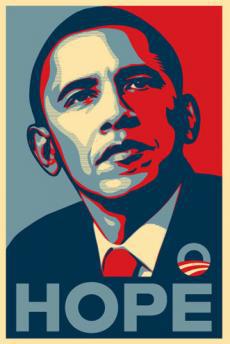The Obama effect
Six lessons from President Obama’s fundraising team to help fuel growth in your organisation.
- Written by
- Jonathon Grapsas
- Added
- May 21, 2011

Since November 2008 it’s been rare to meet a group of fundraisers or attend a conference and not hear people talking about the Obama effect. However, I find it frustrating that many are taking the wrong messages from the most successful political fundraising campaign in history. Everyone’s obsessed with the use of social media (Internet and mobile-based tools for sharing and discussing information). Granted, it played a big role, but that’s a tactic. What’s useful is the thinking behind the execution.
A few months after Obama’s successful journey to the White House I was at the DMA Nonprofit Conference in, of all places, Washington DC.
There was a huge amount of excitement about the presence of Meaghan Burdick, Director of Marketing, Obama for America, who was delivering the opening keynote presentation. I was a little sceptical beforehand as to how much detail she would give about the campaign, which raised $600m (USD). Yes, you read that right, $600 million.
Well, I have to say 'fair play’ to Meaghan; she cut through the rhetoric and gave us the real lowdown. In summary Meaghan credited the success of their amazing fundraising accomplishments to the following six ingredients:
- Investment.
- Risk.
- Messaging and branding.
- Timing
- Creativity.
- Passion.
Let’s face it, these were probably the things, broadly speaking, that we expected to hear. Yet hearing them from the key driver of the campaign really brought it home for me.
I want to touch on those ingredients that I feel are the most applicable to charities wanting to fuel real, sustained and strategic growth in their organisations.
Success doesn’t start overnight

I’ll start with numbers one and two: investment and risk.
Successful charities don’t grow through good fortune or luck; and they don’t cut corners. When I look at thriving charities there is an intrinsic link between level of growth and the level of investment and risks taken.
So Meaghan’s summary of these was music to my ears. She was quick to point out that the success of the campaign didn’t happen overnight, donors and donations didn’t suddenly appear from behind hidden bushes. They invested, seriously: in technology, in good people, in office space, in testing. They took some gambles – some worked, others didn’t. But on balance, more did than didn’t.
The point being that the Obama people realised that the 90,000 emails and 30,000 donors they started with at the beginning of 2007 weren’t going to topple the machine of the Clinton campaign, which already had significant money to throw around.
Fast forward less than two years – more than 5,000 staff have worked harder than they ever thought possible on a multitude of fundraising efforts (including mailing constituents every two weeks). Now they have a list of 13 million email addresses, 3.9m donors and that extraordinary $600m I mentioned earlier.
Oh, and their candidate became the President of the United States...
The best branding any nonprofit can do

Let’s look at the third ingredient: messaging and branding.
I’ve often pointed out to colleagues (and anyone that will listen to me rant) that branding is the most over-exposed and horribly over-analysed word in our sector. To me, branding is what people say about you when you’re not in the room.
I read an article once written by a ‘pr expert’, which said that the most successful and biggest charities had grown because of their ‘brand awareness’. Rubbish I thought, he’s missing the point. These charities grew significantly because they had invested seriously in fundraising, which happens to be the best brand building any nonprofit can do.
Anyway, I digress.
Meaghan’s take on this was that her team needed and demonstrated absolute discipline to keep the message consistent. She insisted that it wasn’t about the man himself: it was about the movement and the necessity for change. The key was to stay on message at every touch point with the American people. Be it on the telephone, through the mail, at public addresses and rallies, through to their online efforts. Note it wasn’t about spending extraordinary amounts of money on ‘brand building’, but on direct response fundraising.
I think it’s fair to say they did a bloody good job on this one.
Ingredients four to six certainly hold weight when we think about what makes a healthy organisation. But for me the first three resonated really strongly in terms of lessons to be applied for nonprofits.
Growth doesn’t (there is always the odd exception) happen without a serious commitment to investment and to taking informed risks.
To be successful, i.e. raise enough money for the cause, a charity has to present its cause coherently and consistently. That doesn’t mean different stories can’t b told, but there should always be an over-arching theme about what the charity is there to do.
I hope you can take more from the Obama effect than just the use of social media.
© Pareto Fundraising February 2009





















